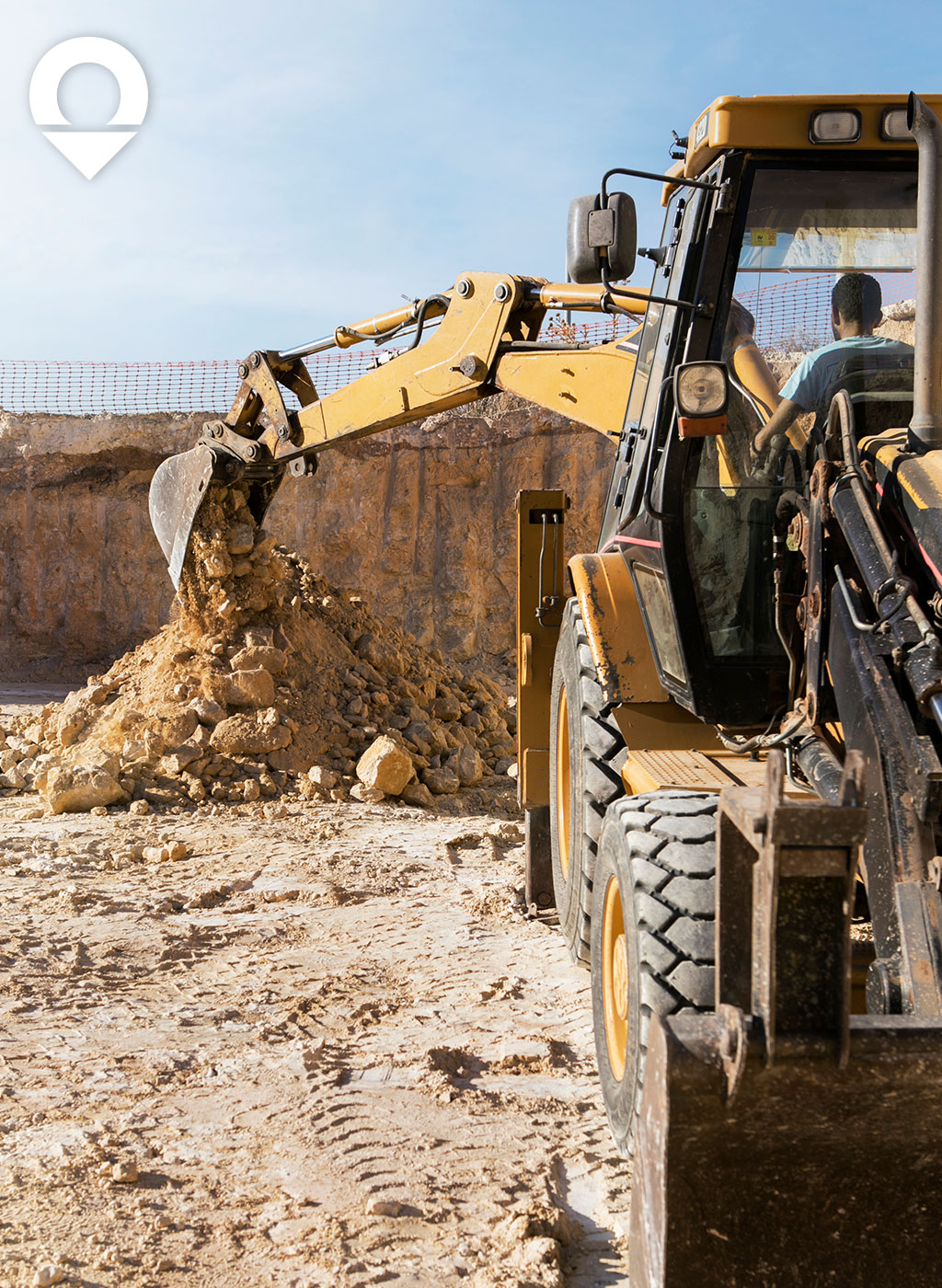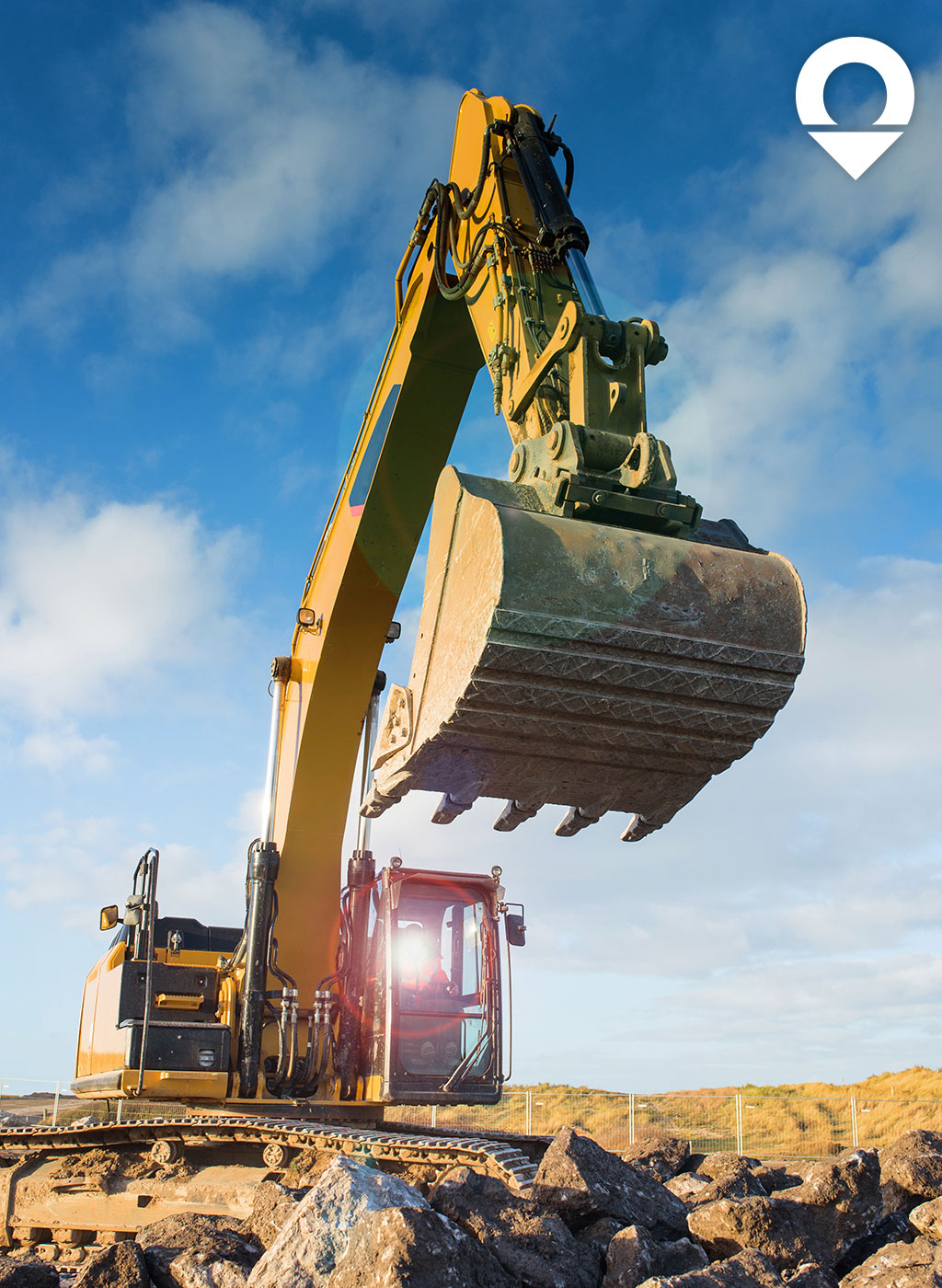Like any actorpublic works or operations manager, you probably have a machine park with many construction machinery, including dump trucks, demolition and earthmoving machines, but also backhoe loaders.
With the rise in fuel prices, particularly GNR In recent years, budgetary management relating to the energy envelope has become an increasingly complex challenge for managers. Reducing your consumption is one thing, there are solutions and we will present them to you. But before addressing the different points, we must start with calculate correctly the fuel consumption of its machines to be able to analyze the effects of the solutions put in place.
Let's start with this point by taking the example of the fuel consumption of a backhoe loader.

How to calculate the consumption of a backhoe loader?
In addition to data from electronic systems, only the manual method is 100% reliable for determining the fuel consumption of construction vehicles, both in the road sector and those used for work.
The calculation method
This involves measuring the quantity of fuel used by the vehicle in service, regardless of the type of fuel it uses. We agree, there are embedded systems in all areas, but their accuracy is not 100% reliable.
For it to be so, the following calculation method must be applied:
- Know the total capacity of the fuel tank then fill it to the maximum and note the quantity of liters added. If there is any left inside before refueling, you can subtract the total capacity by the amount of liters added to get the difference.
- Use your machine to carry out usual work without changing your speed of execution. This parameter of speed and power used is very important for a realistic result. Remember to set your odometer to 0 if you want a calculation per km.
- You can use the backhoe loader until it runs out of fuel or allow a period of time, for example 2 hours and refuel, noting the number of liters added. You will then have the quantity of fuel consumed during the number of hours worked.
Don't forget to note the number of kilometers traveled and the number of hours of use. You then have two solutions. You want to reduce this consumption on a kilometer basis for example.
All you have to do is perform a cross calculation:
- Liters consumed x 100 km/by the number of km traveled = backhoe loader consumption per 100 km
However, this calculation is not very relevant when using construction equipment. In general, we will try to carry out a calculation per hour of work to know the consumption.
In this case :
- number of liters consumed/number of hours worked = consumption per hour.
What is the average consumption for a day?
Several data influence the consumption of a backhoe loader over the course of a day, including:
- The size and weight of the vehicle (backhoes, trucks, tractors, agricultural equipment)
- Fuel efficiency, power and engine technology
- Driving (braking, obstacles, speed)
- Use (dimmable)
- The terrain (road condition, slopes, surface)
- Vehicle maintenance (oil level, tire pressure).
To give you an idea, even if it is impossible to give an exact consumption value, a backhoe loader consumes on average between 8.5 L and 10 L per hour, over a day on site equivalent to 8 hours.
What fuel for a backhoe loader?
Backhoe loaders, like any other non-conventional vehicles, generally use GNR as fuel. Non-Road Diesel is a diesel fuel specially designed for agricultural, forestry and construction vehicles, which have two particular characteristics. GNR is tinted red to differentiate it from traditional diesel and from a tax point of view, it is more economical, because it offers advantages including the reimbursement of a part of these energy products by the government (TICPE).
On the price side, the GNR evolves according to the price of oil and the various events which affect the oil market. Recently, the price of GNR has increased due to geopolitical factors (Russia/Ukraine conflict), responsible for the oil surge.
Apart from the financial aspect, which is already very impactful, there is also the question of the climate issue. The consumption of a backhoe loader (and other machines) is enormous and therefore releases high CO2 emissions. In this sense, there are some good practices to put in place to reduce your fuel budget and pollute less.

How to reduce the consumption of your backhoe loader?
Organization and eco-driving
To effectively reduce the consumption of your backhoe loader , it is advisable to optimize the organization of each site in order to limit travel, which will directly impact usage of course. Then, train yourself and adopt eco -driving , an excellent initiative to minimize your environmental impact and reduce energy waste.
This consists of adopting flexible driving by anticipating the journey to avoid sudden acceleration and braking. Eco-responsible driving also means stabilizing the movement speed of the backhoe loader by avoiding prolonged stops if possible and by turning off non-mandatory features such as air conditioning or daytime running lights when they are not necessary.
Choosing the right construction equipment
To maximize the efficiency of a backhoe loader, it is necessary to use the model best suited to the needs of the current site. The problem of “over-equipment” is more common than we think. Adapting the power and size of the machine to the needs of the site is an intelligent action to minimize negative externalities.
The importance of maintenance
The maintenance of any vehicle is of capital importance and must be done regularly, if only for safety, working comfort, but above all to limit the fuel consumption of the backhoe loader via wear of parts. Be sure to drain the oil and fuel filters, especially during intensive use, to maintain a clean and functional engine.
Check the cooling system as well as the hoses and radiators for leaks, deformations or cracks. The exhaust system must not be obstructed otherwise it reduces engine performance and contributes to increased emissions harmful to the environment.
The ECOLOW module for Public Works
The box that we developed at ECOLOW is a technology which, in addition to all these practices, makes it possible to reduce consumption by 12% to 15% for public works and forestry machines. The numerous tests carried out over several years and the field results observed during our expansion confirm the effectiveness of our fuel saver module.
The major advantage is that the system is considered an aftermarket accessory and as such, it does not impact the assembly components and therefore does not influence the manufacturer's warranty. Interchangeable and guaranteed, you can install it with peace of mind on different vehicles in your fleet. Do not hesitate to contact our teams or visit our site in more detail to obtain information.

